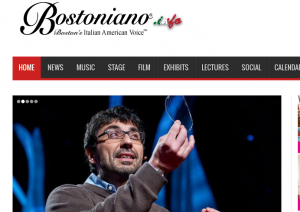 Fiorenzo Omenetto works with silk all day (and apparently a lot of nights, too), but he does not make clothes, not even invisible ones, contrary to rumors triggered by a journalistic exaggeration published a couple of years ago and quickly spread around the world. Yet, thanks to a fascination with this natural material — discovered at the dawn of civilization and used by mankind ever since — the scruffily bearded 46-year-old scientist from Varese, Italy, makes just about everything else.
Fiorenzo Omenetto works with silk all day (and apparently a lot of nights, too), but he does not make clothes, not even invisible ones, contrary to rumors triggered by a journalistic exaggeration published a couple of years ago and quickly spread around the world. Yet, thanks to a fascination with this natural material — discovered at the dawn of civilization and used by mankind ever since — the scruffily bearded 46-year-old scientist from Varese, Italy, makes just about everything else.
In his hands — or, to be exacted, by the state-of-the-art tools and machinery at Tufts University’s brand new 20-scentist-strong “Silk Lab” — the durable, thin, elastic thread with which the caterpillar protects itself while transforming into a butterfly becomes an incredible variety of objects in all textures and shapes. From and ultra-thin transparent film to Styrofoam-like cups all the way to hard-as-metal nuts and bolts, they are all biodegradable, and in many cases edible!
“Silk is basically a protein,” Omenetto explains with the matter-of-fact tone of those who deal on a daily bases with what the rest of us enouncter only in science fiction. “We managed to turn the natural process backward and return the silk thread to the original, amazingly simple protein it is made of. Once the protein is isolated — just like stem cells — you can reshape it into basically whatever you want.”
When explained by Omenetto — who boasts an engineering degree, a Ph.D. in photonics and an eight-year stint at the legendary research center at Los Alamos, home of the Manhattan Project — the idea sounds elementary. But the implications, in fields ranging from material science to environmental protection, are huge.
“Everything we make here can be obtained with other technological materials, but it turns out no other has the combination of properties of this,” Omenetto explains while holding a hard, white silk cocoon. Smaller than a walnut and impossible to tear by hand, it is made of a one-kilometer-long thread wrapped around itself thousands of times.
“(Silk) is flexible, resistant, electrically conducive when combined with silicon and gold,” he continues. But it’s also organic, and therefore safely implantable in the human body, capable of absorbing and releasing substances over time and biodegradable in a programmable way.” In other words, the pre-dissolution lifespan of an object made of silk can pretty much be set by its makers with remarkable accuracy.
The possible applications of the research being conducted by Omenetto and David Kaplan (his “partner in crime” as he jokingly refers to him) are potentially endless. “Imagine a microchip implanted into the body that, at the same time, releases medication and wirelessly communicates digital data and, when its job is done, safely dissolves; or a cellphone that, at the end of its life, can be eaten rather than thrown away.”
At the end of the lecture he was invited to give at TED, the famed annual international conference on innovation, he actually ate an iphone, even though in that case it was only a cookie that looked exactly like one. “Technology is not there yet,” he explains with a big smile surrounded by his groomed-to-look-unkempt beard, “but it soon will be. What we are trying to do here is rethinking materials, in a way they were never thought about before.”
No wonder the list of those interested in financing his projects includes all four braches of the armed forces and many huge international corporations that he is not at liberty to mention. His collaborators include top agencies like the National Center for Research in his native Italy, which — although he considers it “a difficult country to work with” — he has not given up on.
Nor has he given up on trying to convince the many journalists who flock to this facility from around the world that there is no secret section of his lab where “invisible cloaks made of silk and gold” are being made, as one journalist wrote and countless others recycled. Yet, given the sheer volume of “real” science fiction displayed in plain sight and talked about here, not even the most “tabloid” of reporter can leave Omenetto’s “Silk Lab” with the feeling of having wasted a trip.
